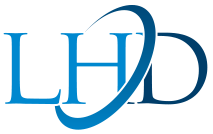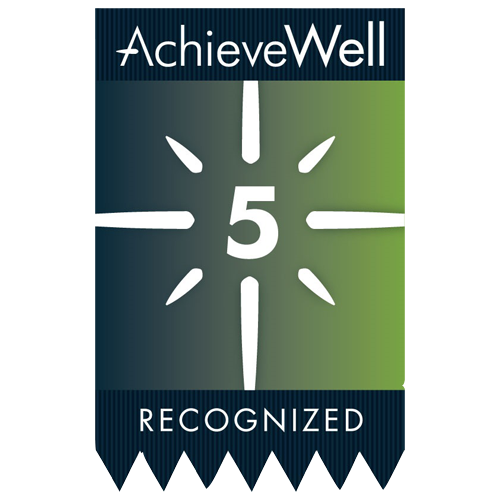MHPAEA Regulation Changes
MHPAEA generally requires mental health and substance use disorder (MH/SUD) benefits to be given the same availability as medical/surgical benefits.
As a result of a perceived disparity between the availability of MH/SUD benefits and medical/surgical benefits, Congress and the White House are enacting tougher regulations to ensure mental health and medical/surgical benefits are equally available.
DOL, HHS, and IRS have proposed new regulations that would increase the amount of reporting surrounding Nonquantitative Treatment Limitations (NQTLs), which has been an avenue for plans restricting access to MH/SUD benefits.
Gag Clause Prohibition Compliance Attestation
The Consolidated Appropriations Act of 2021 included a provision that prohibits group health plans from entering into an agreement that would prevent disclosure of information on the cost or quality of care.
Starting in 2023, plans are required to submit an attestation to DOL, HHS and Treasury. HHS’s guide for submitting the attestation can be found here. The deadline for submitting GCPCA is Dec. 31, 2023
Air Ambulance Reporting
No Surprises Act requires providers of air ambulance services to report two years’ worth of information regarding air ambulance services. First round of reporting is due March 30, 2024, for information on air ambulance services provided in the 2023 plan year. Second round of reporting will be due March 31, 2025, for the 2024 plan year.
Information to be included by group health plans:
- Identifying information of the plan, sponsor, or issuer
- Type of coverage (individual, large group, small group, self-insured, etc.)
- Information about individual claims
- Billing information
- Type of aircraft
- Pick up and drop off locations
- Claim adjudication information
Litigation Developments
Fiduciaries: new disclosure requirements for health and welfare plans has invited a raft of litigation against health and welfare plan fiduciaries. This litigation could pose a problem for health and welfare plans if it proves to be a lucrative area of litigation. These types of class actions have been troublesome in the retirement space.
Service Providers: Kraft Heinz sued Aetna alleging a breach of fiduciary duty due to Aetna’s practice of cross plan offsetting. There has been a steady stream of these types of lawsuits in the past few years. A class action lawsuit has been filed against CIGNA alleging the use of AI to review/deny benefits that should have been reviewed/denied by a doctor. Other insurance providers have been reported to be using similar practices. More lawsuits may be incoming.
Misc. Statutory/Regulatory Developments
Increased PBM Oversight: Lawmakers in Congress have proposed legislation that is aimed to address anticompetitive practices that some Pharmacy Benefit Managers (PBMs) engage in.
Health Care Price Transparency Act: Ways and Means is considering a bills intended to increase transparency in pricing. These bills are unlikely to affect the 2024 plan year but are something to keep an eye on.
IRS 2024 W-2 Electronic Filing Mandate: Forms W-2 could previously be filed on paper for employers with 250 or fewer employees. The threshold has been reduced to 10 starting in 2024.
State Laws
In addition to federal updates, plans should be conscious of litigation, statutory, and regulatory updates that may have occurred in states in which the plan is operating.
Many states have departments of insurance that provide convenient lists of legal and regulatory updates. For example, California’s 2022 end of year press release for 2023 insurance updates can be found here.
2023-2024 IRS Annual Adjustments
| Limit | 2023 | 2024 |
| Out-of-Pocket Maximum – Self-Only Coverage | $9,100 | $9,450 |
| Out-of-Pocket Maximum – Family Coverage | $18,200 | $18,900 |
| HSA Contribution Limit – Self Only | $3,850 | $4,150 |
| HSA Catch-up Contributions | $1,000 | $1,000 |
| HDHP Minimum Deductible – Self Only | $1,500 | $1,600 |
| HDHP Minimum Deductible – Family | $3,000 | $3,200 |
| HDHP Out-of-Pocket Maximum – Self Only | $7,500 | $8,050 |
| HDHP Out-of-Pocket Maximum – Family | $15,000 | $16,100 |
| Health Care FSA | $3,050 | $3,200 |
| Limited Purpose FSA | $3,050 | $3,200 |
| Health Care FSA Carryover | $610 | $640 |
| Dependent Care FSA – Filing Singled/Married | $5,000 | $5,000 |
| Dependent Care FSA – Married Filing Separately | $2,500 | $2,500 |
Update/Review Plan Documents
- Have your plan documents been reviewed/updated recently?
- Are your documents compliant with existing law (federal, state, local)?
- Are your documents compliant with new statutory and regulatory requirements?
- Have there been any operational issues based on how the plan is structured?
Example – Plan A’s terms for changing mistaken elections are quite permissive and management is becoming concerned that participants are using it to make election changes that were not mistakes. Plan A should consider narrowing the situations the plan allows for changes due to mistake.
Review Plan Operations
- Have your operations followed all the plan’s terms?
- Have your operations followed all the law (especially areas where there have been updates)?
- Were all eligible employees given the opportunity to enroll in the plan?
- Is your plan overpaying for services?
- Have there been any problems with operations that occurred within the past year? How were they fixed and will that prevent the problem from recurring?
Thanks to transparency in coverage rules, it is now easier to see industry trends and what other plans are paying for similar services.
Nondiscrimination Testing
Section 125 nondiscrimination testing must be done on the last day of the plan year. Because the plans must pass nondiscrimination testing at the end of the year, plans should do a projected nondiscrimination test at the beginning of the year to determine whether the plan is likely going to be out of compliance.
This entails:
- Projecting who the likely HCEs and Keys are going to be
- Running the nondiscrimination tests based on those projections and current participant elections
- Determining whether, based on how midyear election changes or changes in salary may affect the plan, whether the plan is in any jeopardy of failing nondiscrimination testing at the end of the year.
In instances where employers are in danger of failing the nondiscrimination test, they should adjust benefits or elections to ensure that HCEs/Keys are not receiving too many benefits.
Election Review
Participants and plans should review elections for the coming year to ensure accuracy. Legally, it is much easier to correct elections.
Three points of failure for elections:
- Participants making a mistake while making elections (e.g. accidentally making a $100 FSA election instead of $1,000, enrolling in a Dependent Care FSA when they meant to enroll in a Health FSA)
- The election being mishandled by the employer (e.g. a system error or mistake by an HR employee causes an election not to be registered by the employer’s system or transferred to the service provider)
- The service provider failing to register that an employee has made an election
Grace Period/Run-Out Period
If the plan allows grace periods and run-out periods, participants will need to spend their unused benefits either on benefits that accrued within the plan year (run-out) or within the grace period window.
Participants with FSAs should be reminded to spend down their remaining FSA benefits during the Grace Period/Run-Out Period to ensure that those benefits don’t go unused.
Minimum Essential Coverage
Applicable Large Employers (ALEs) are required to offer minimum essential coverage to 95% of its full-time employees. To meet minimum essential coverage requirements, the plan must meet an affordability threshold (has not been announced for 2024) and provide a minimum level of benefits.
Employers should review the following:
- Whether the employer is an ALE (applies if employer has 50 or more full-time employees or full-time equivalents)
- Identification of full-time employees, determination of whether 95% of them are being offered coverage
- Whether the coverage offered meets affordability and minimum value standards.
Failure for an ALE to offer minimum essential coverage will lead to penalties.
Misc. Operational Issues
- Review wellness programs: Are incentives legally compliant?
- Domestic Partner Benefits: May be a potential draw for younger workers, will help employer score better on Diversity, Equity, and Inclusion metrics
Note: Benefits to domestic partners are usually taxable. Form W-2 should be adjusted to reflect imputed income when this is the case.
Reporting/Disclosure Requirements
Many reporting and disclosure requirements are due either late in 2023 or in 2024. Some reporting requirements are also quite onerous; even though they may be due a few months into the plan year, making sure they get done on time is essential. Incorrect, incomplete, and late disclosures can result in extra taxes and fees being paid to IRS, DOL, or HHS.
Big/important disclosures to think about early in the year:
- W-2 (some health and welfare reporting requirements apply)
- Forms 1094-C/1095-C
- Form 5500
Pending Notice/Reporting Requirements for 2024
| Notice | Description | Due Date |
| 1094-C/1095-C | ACA Mandated reporting for applicable large employers | Feb. 28 for paper, Mar. 31 for electronic submission.
Automatic 30-day extension if Form 8809 filed by due date |
| Form W-2 | Aggregate cost of employer-sponsored health coverage may need to be included. Dependent Care benefits need to be included. | Due Jan. 31, 2022 |
| CHIP Notice | Notice that employees might be eligible for premium
assistance under state Medicare laws |
Due Annually |
| WHCRA Notice | Notice regarding availability of post operative mastectomy benefits | Due Annually |
| Wellness Program Notice | Notice describing certain information that may be required for participation in a wellness program and what that information will be used for | Due annually before enrollment, give participants enough time to decide whether to participate |
| Notice | Description | Due Date |
| 1094-C/1095-C | ACA Mandated reporting for applicable large employers | Feb. 28 for paper, Mar. 31 for electronic submission.
Automatic 30-day extension if Form 8809 filed by due date |
| Form W-2 | Aggregate cost of employer-sponsored health coverage may need to be included. Dependent Care benefits need to be included. | Due Jan. 31, 2022 |
| CHIP Notice | Notice that employees might be eligible for premium
assistance under state Medicare laws |
Due Annually |
| WHCRA Notice | Notice regarding availability of post operative mastectomy benefits | Due Annually |
| Wellness Program Notice | Notice describing certain information that may be required for participation in a wellness program and what that information will be used for | Due annually before enrollment, give participants enough time to decide whether to participate |





